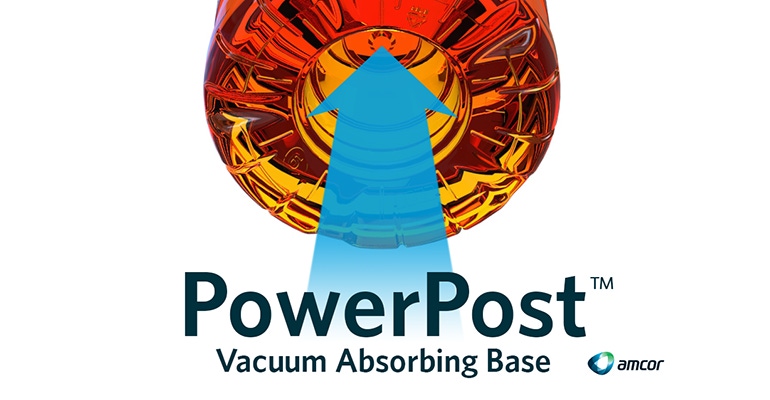The technology produces bottles nearly one-third lighter with a 30% energy reduction and 30% carbon savings over most 20-oz bottles.
May 6, 2022

Just ahead of National Packaging Design Day on May 7, Amcor Rigid Packaging (ARP) has announced the launch of PowerPost, a technology that produces bottles nearly one-third lighter with a 30% energy reduction and 30% carbon savings over most 20-oz bottles available today. It also allows for the use of up to 100% recycled materials and reportedly provides a superior consumer experience by eliminating spills from overflow when the bottle is first opened.
ARP claims that PowerPost is the most advanced lightweighting technology for hot fill beverages on the market today. It is described as an extension of Amcor’s patented, vacuum-absorbing technology, PowerStrap. The PowerPost base incorporates two key technologies — an invertible, central post that actively displaces vacuum and PowerStrap, the flexible ring surrounding the post. After filling, the post is inverted to actively displace vacuum inside the container. As the product cools down, the surrounding ring flexes to passively absorb any remaining vacuum.
By eliminating vacuum panels, PowerPost offers increased design freedom, a premium appearance, and consumer appeal, while addressing sustainability goals, said ARP in the announcement. Eliminating the panels in the body also drives operational improvements at the fillers. Bottle labels are applied more efficiently, said the company.
“Our engineers developed technology that pushes the boundaries of lightweighting in the hot-fill arena to help our customers meet their cost and sustainability needs,” said Terry Patcheak, Vice President of R&D, Sustainability and Project Management at ARP. “This next-generation innovation will improve the consumer experience while addressing widespread commitments to reduce material use and lower greenhouse-gas emissions.”
Amcor has pledged to make all of its packaging recyclable, compostable, or reusable by 2025.
Polyethylene terephthalate (PET), which has rapidly become the world’s preferred packaging material, is lightweight, shatterproof, re-closeable, resealable, reusable, and infinitely recyclable via chemical methods. In addition, PET bottles often have the lowest carbon footprint, and their production results in up to 70% fewer greenhouse-gas emissions than other packaging materials, according to Amcor’s lifecycle analysis.
You May Also Like


